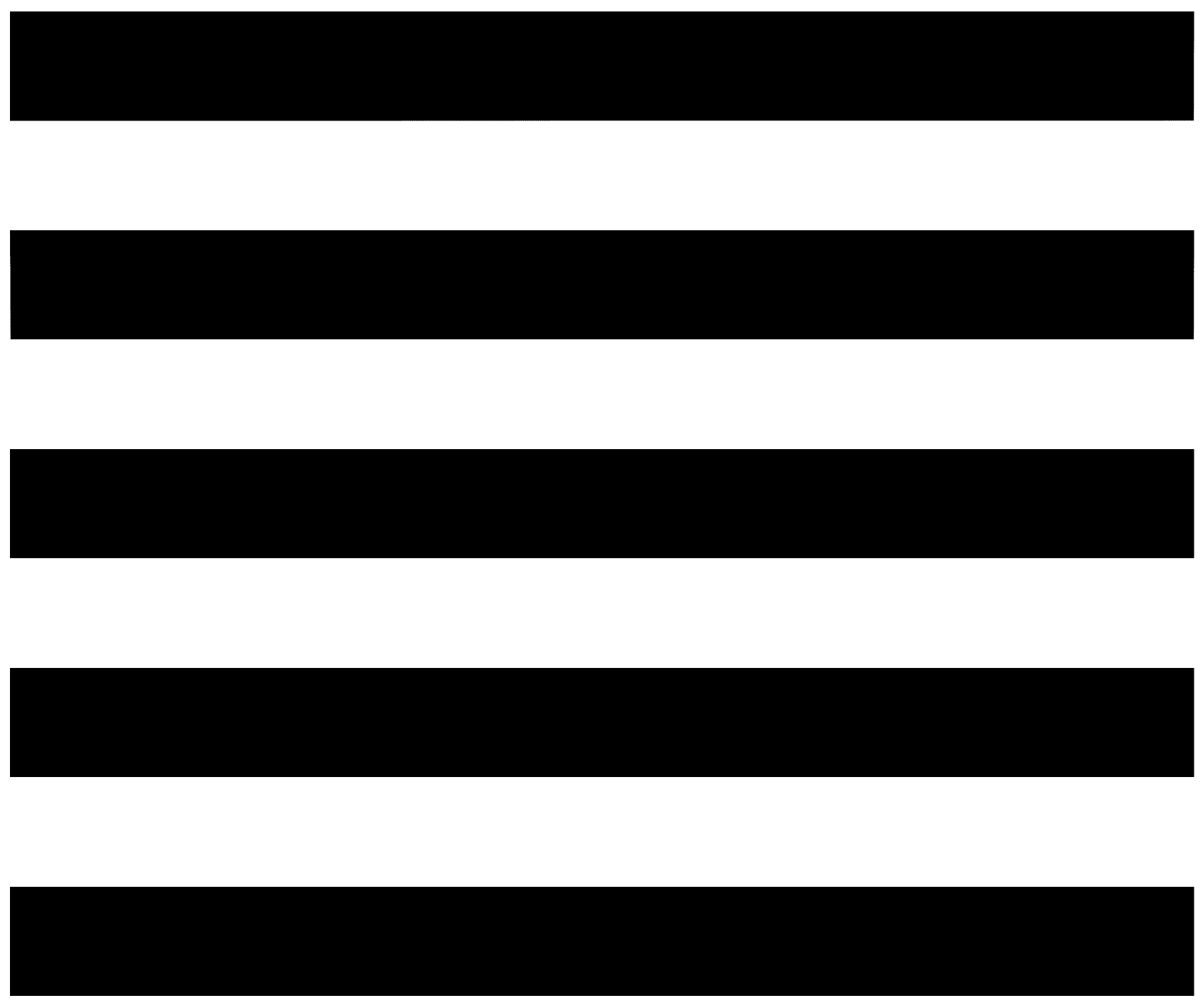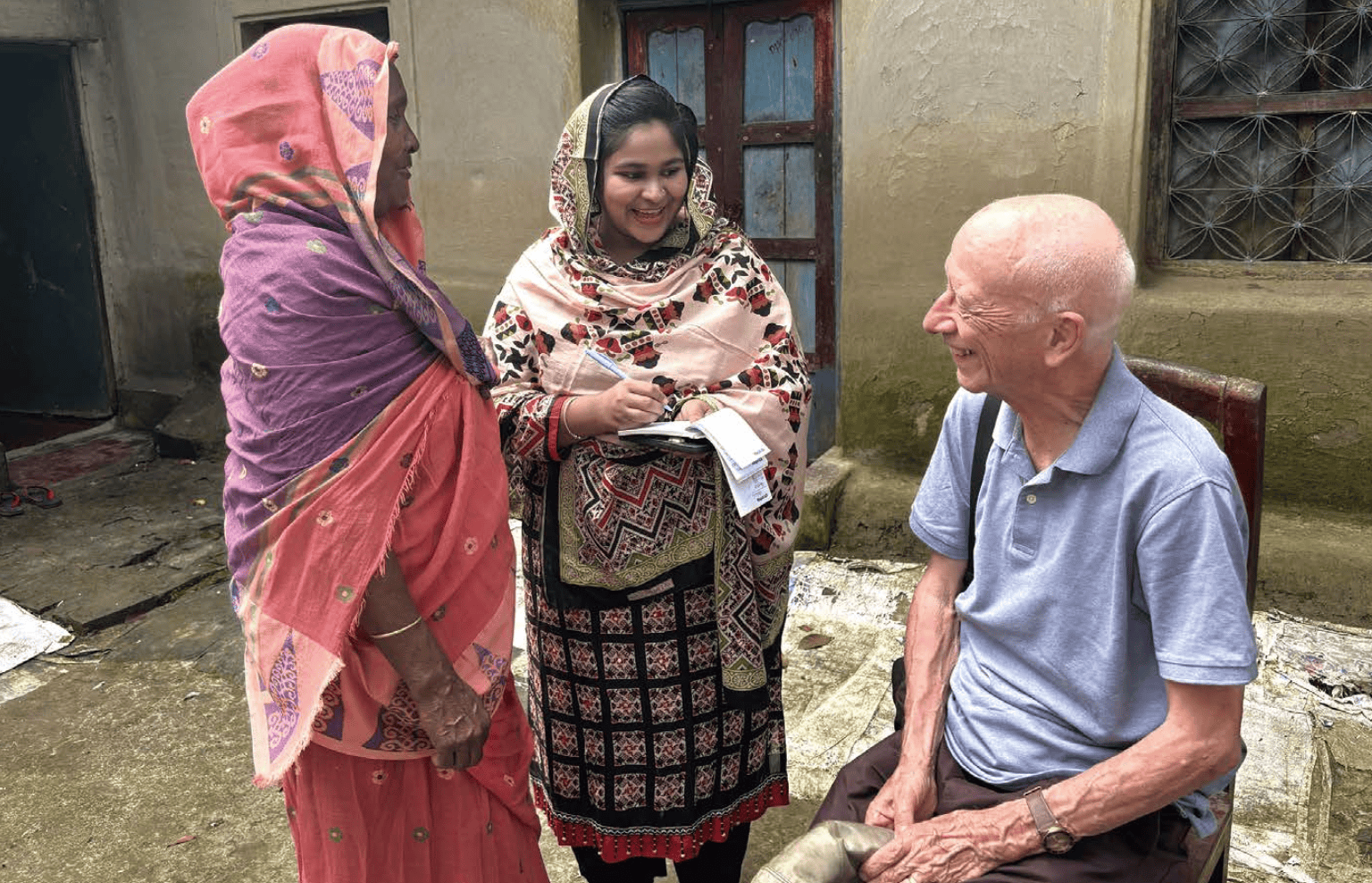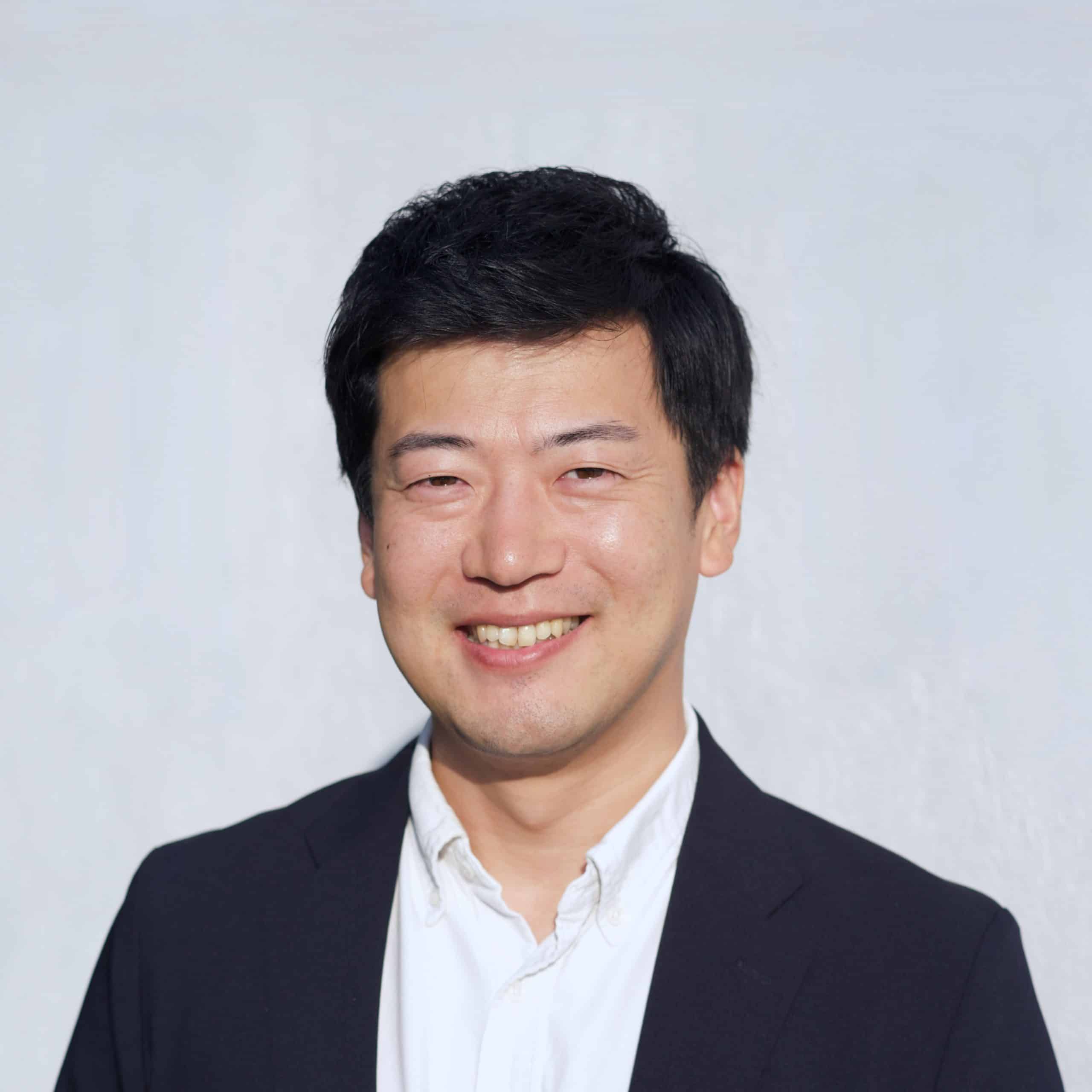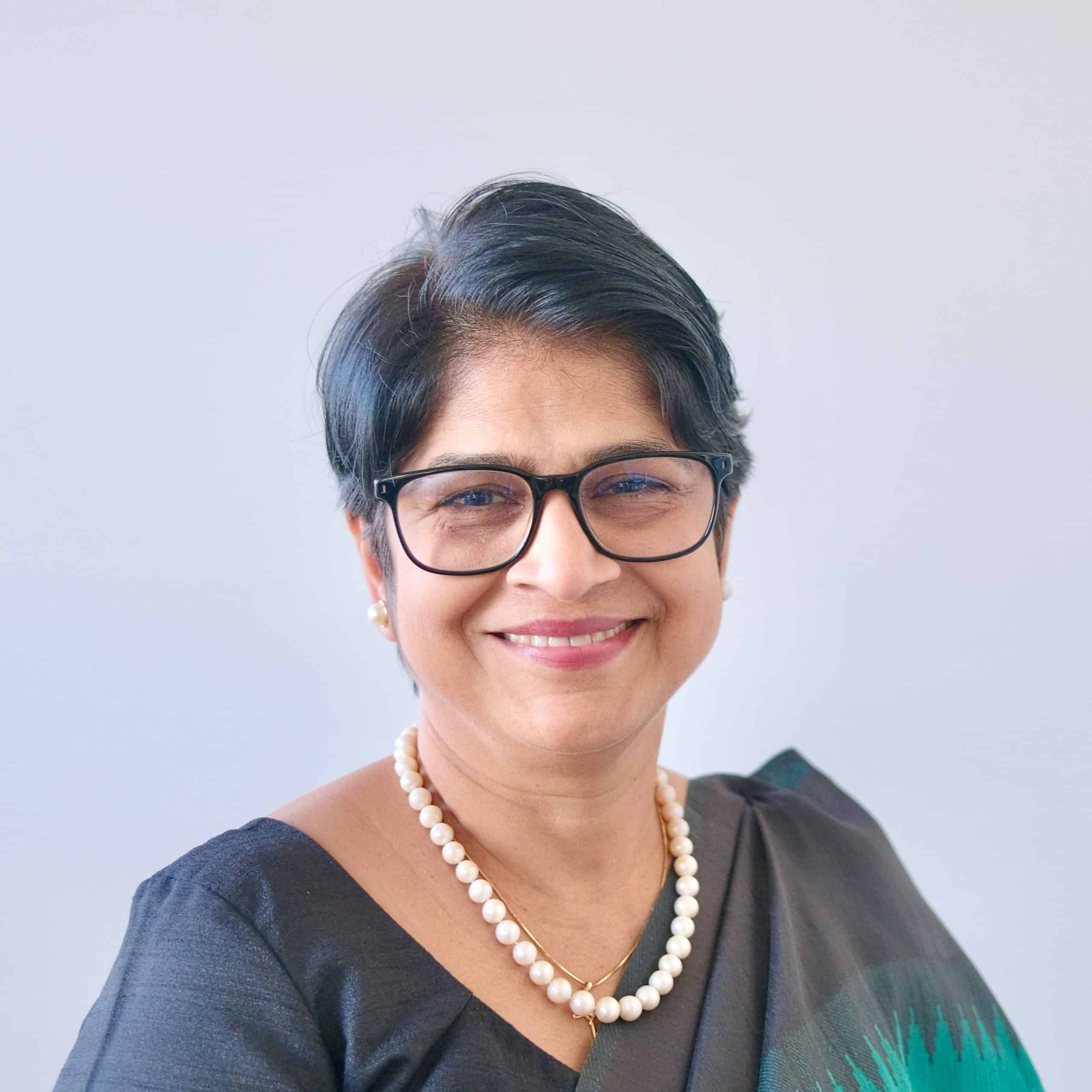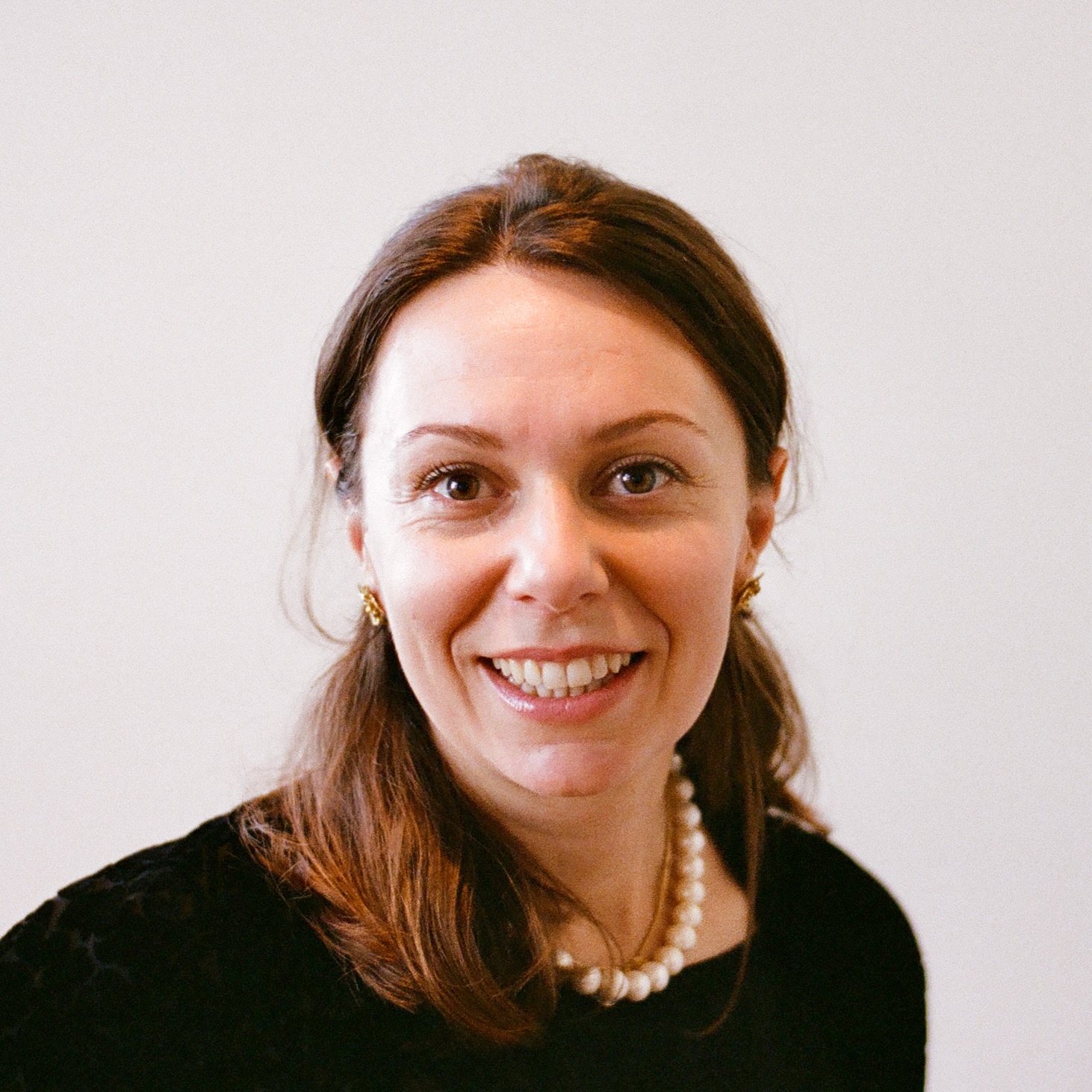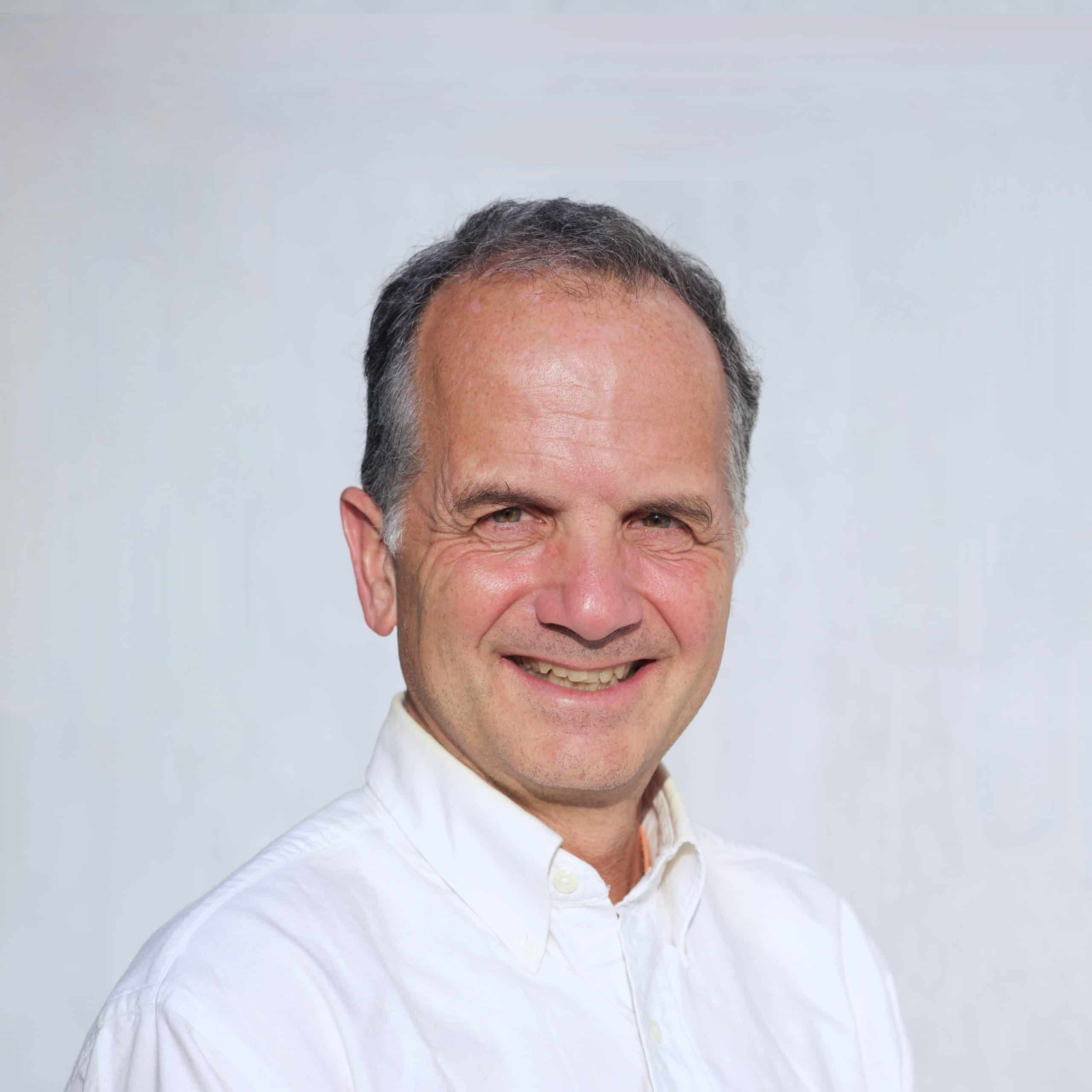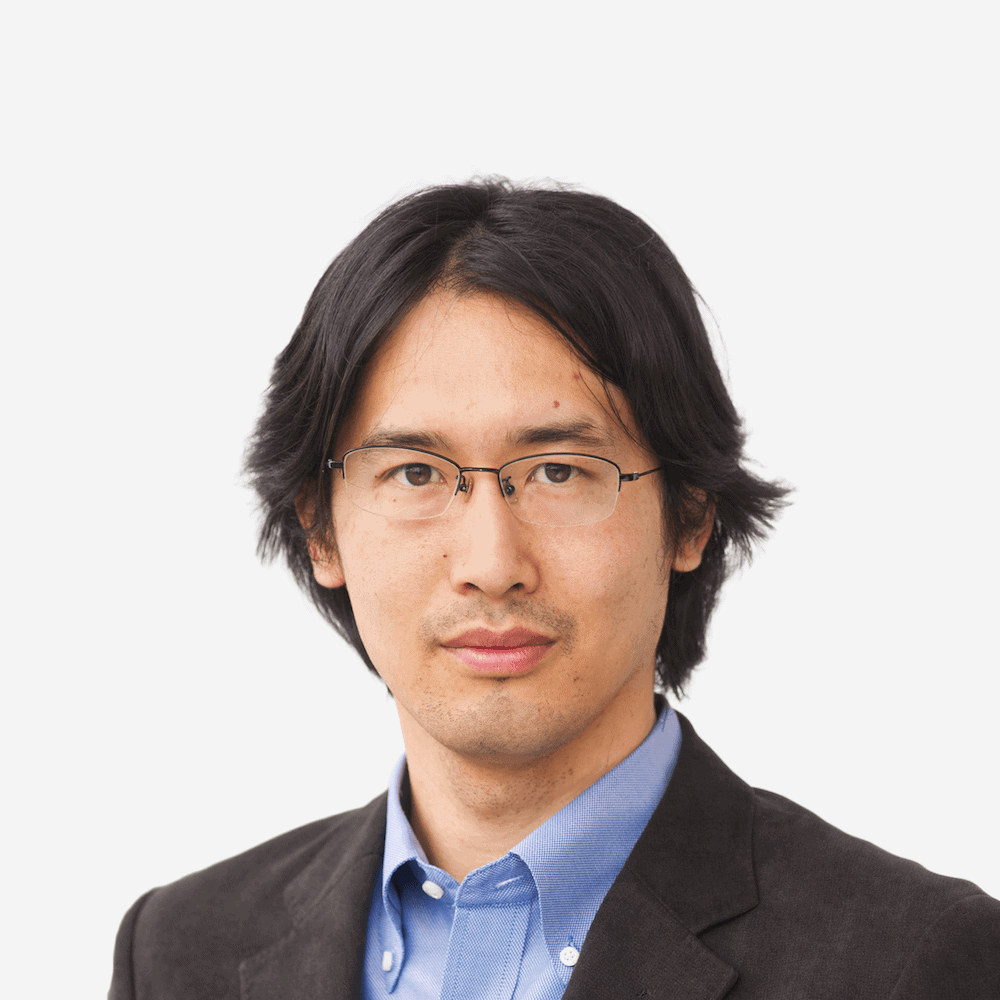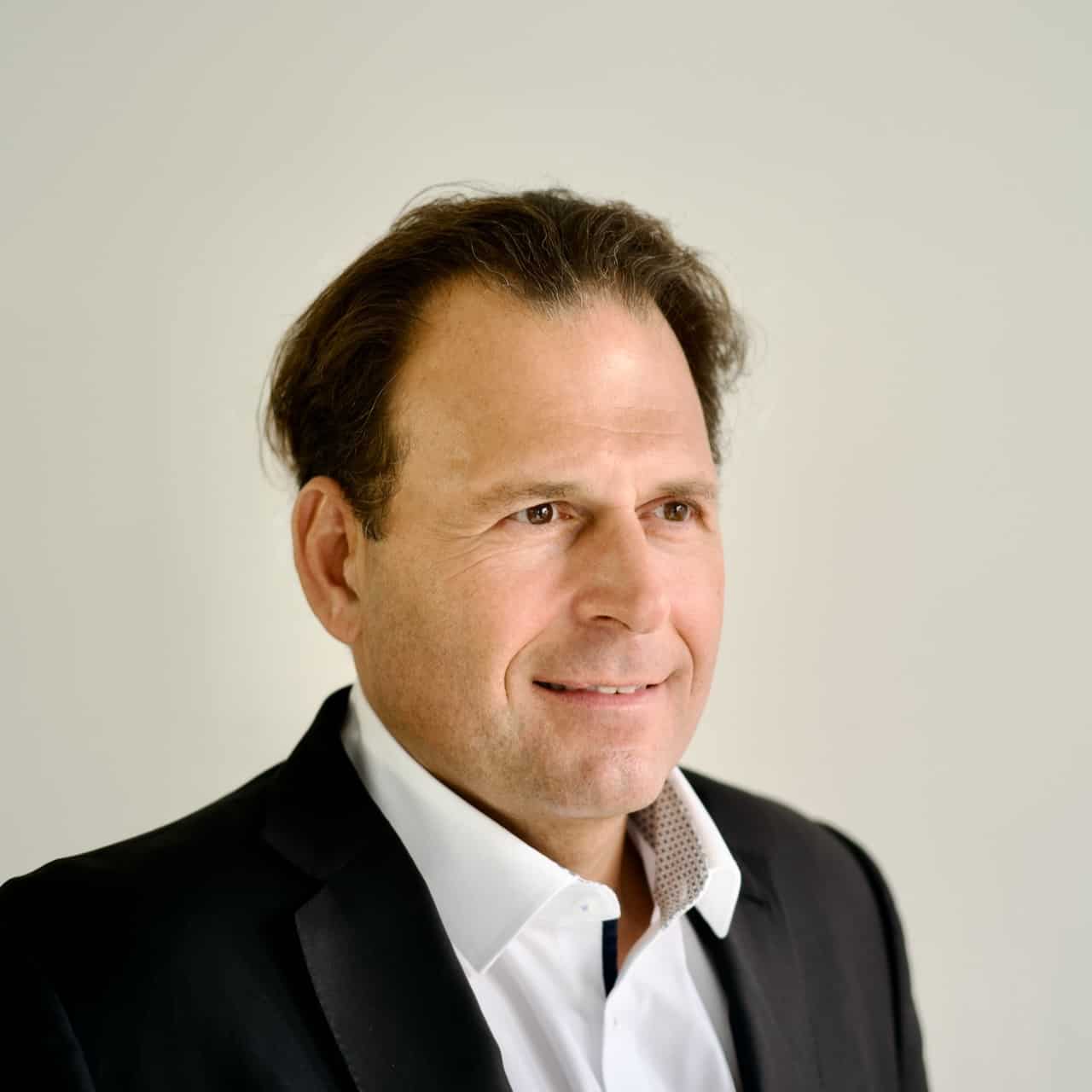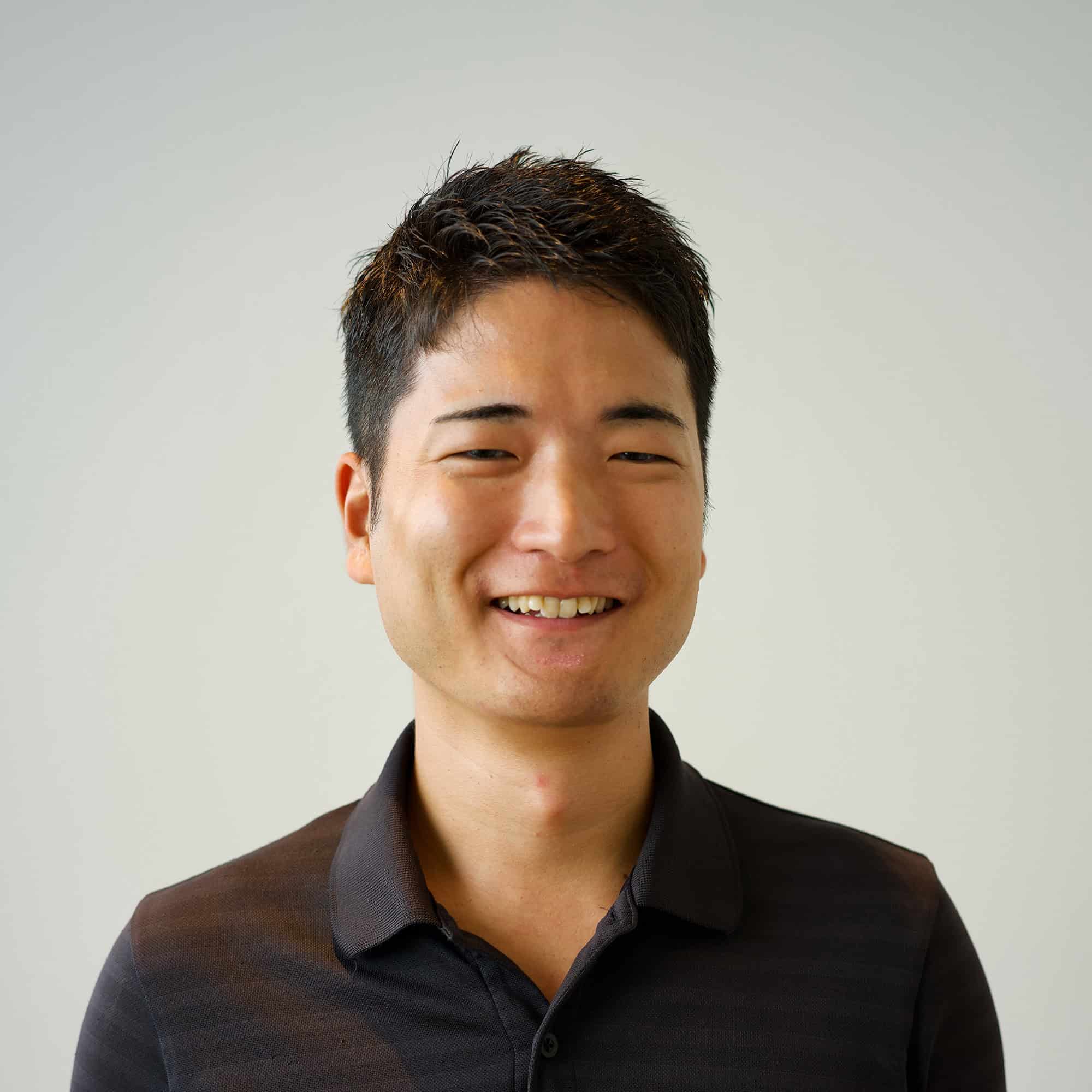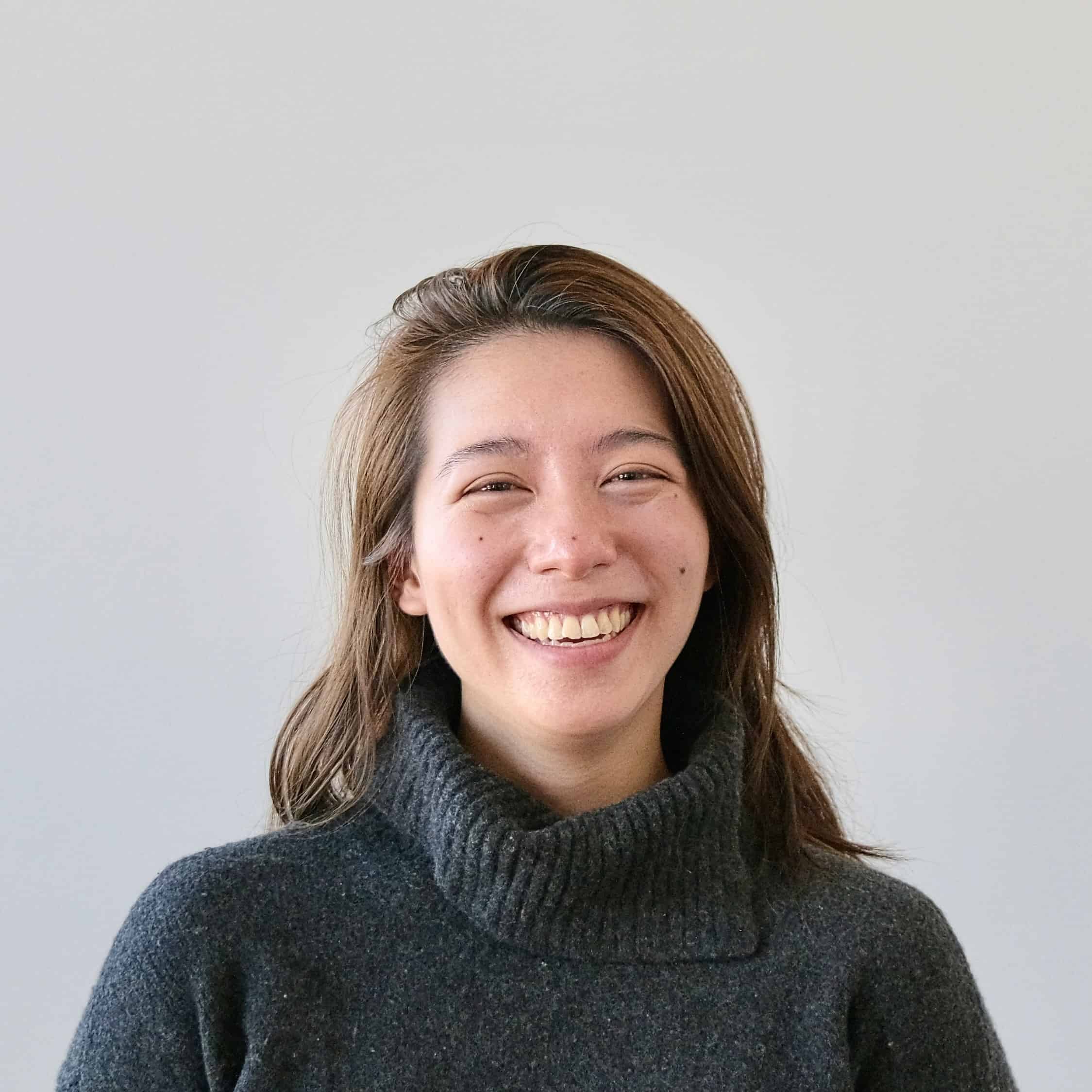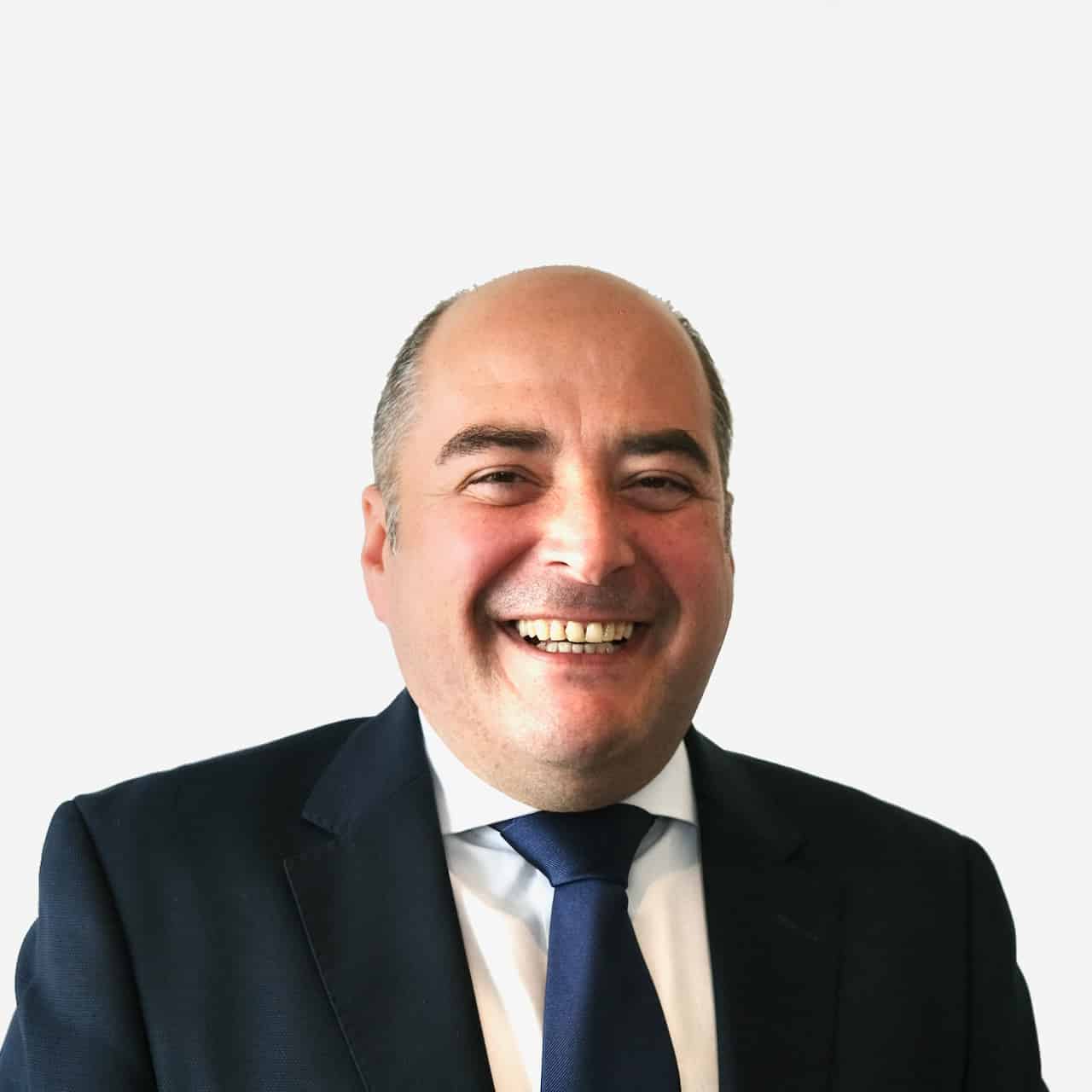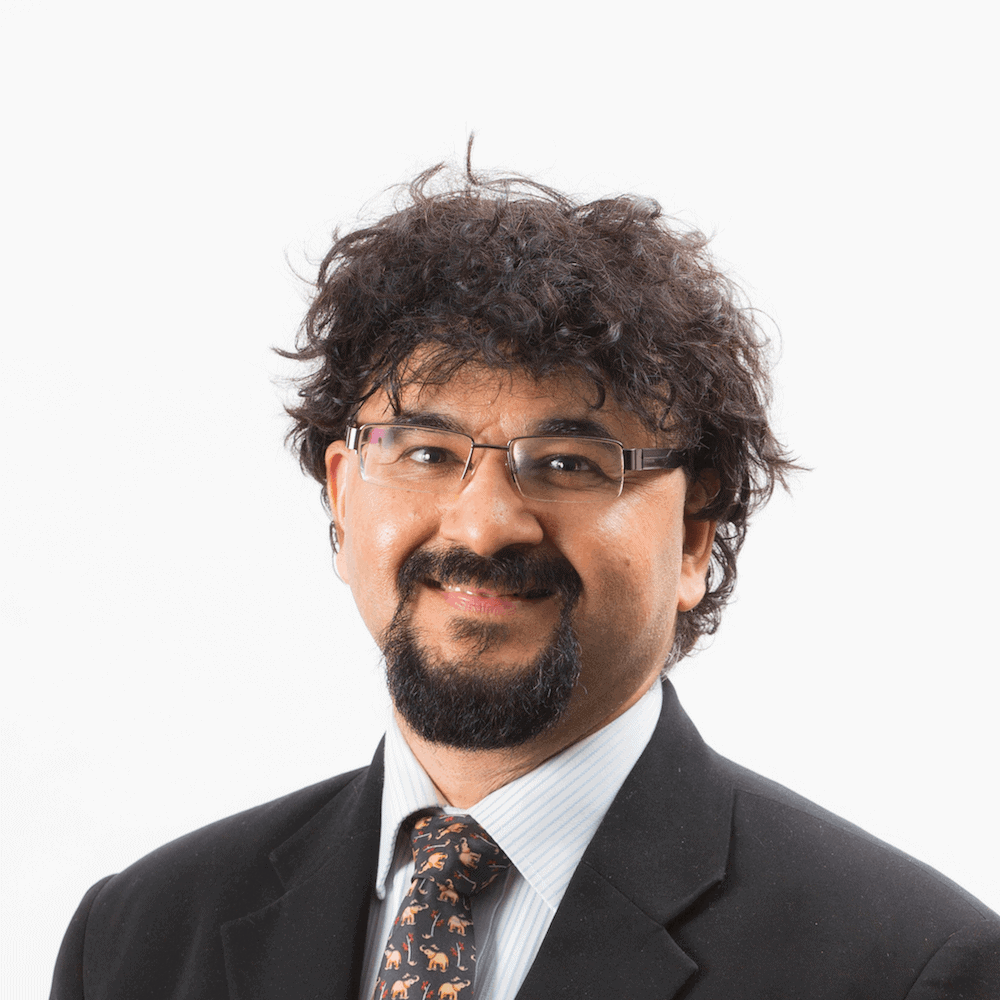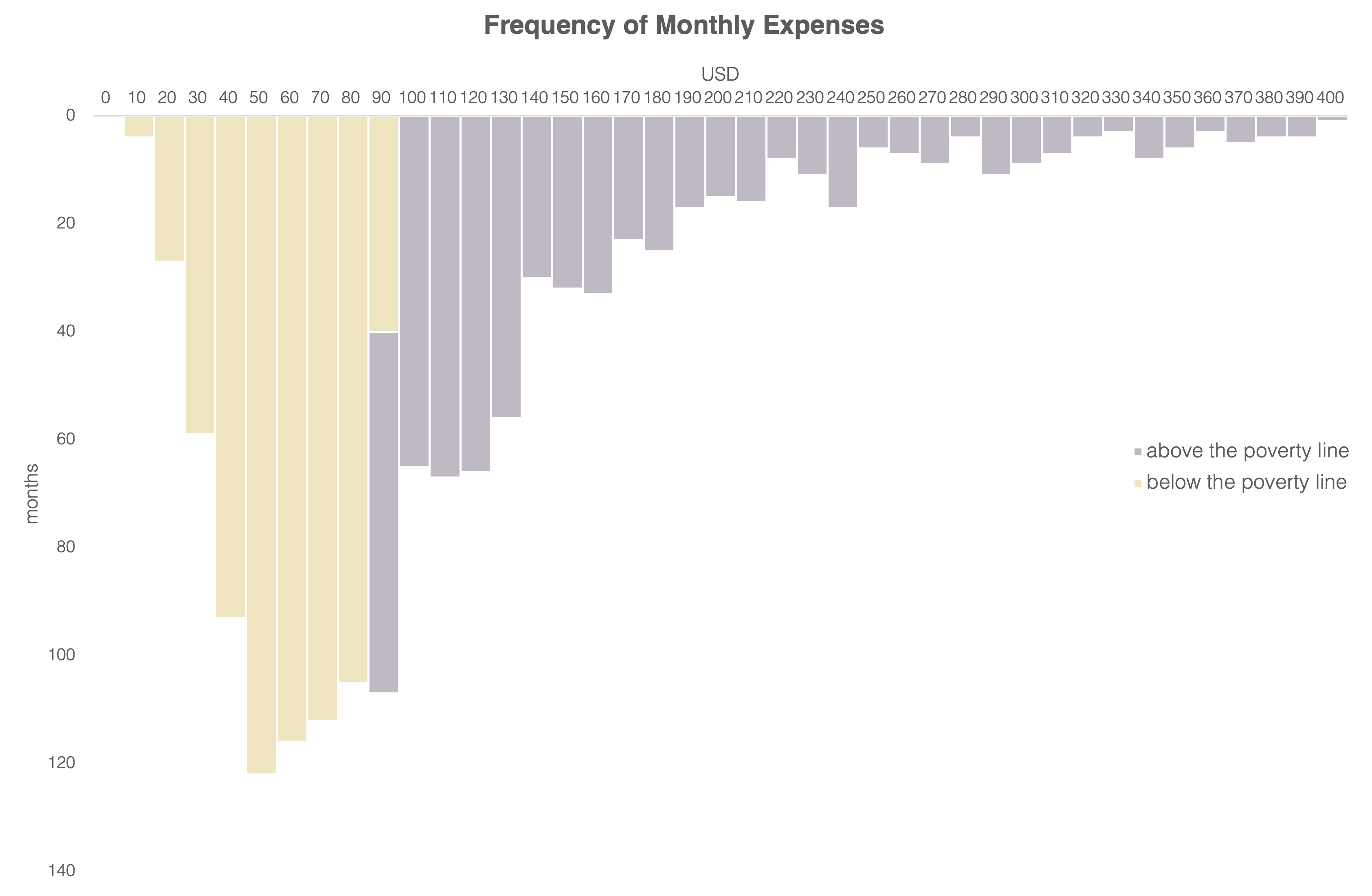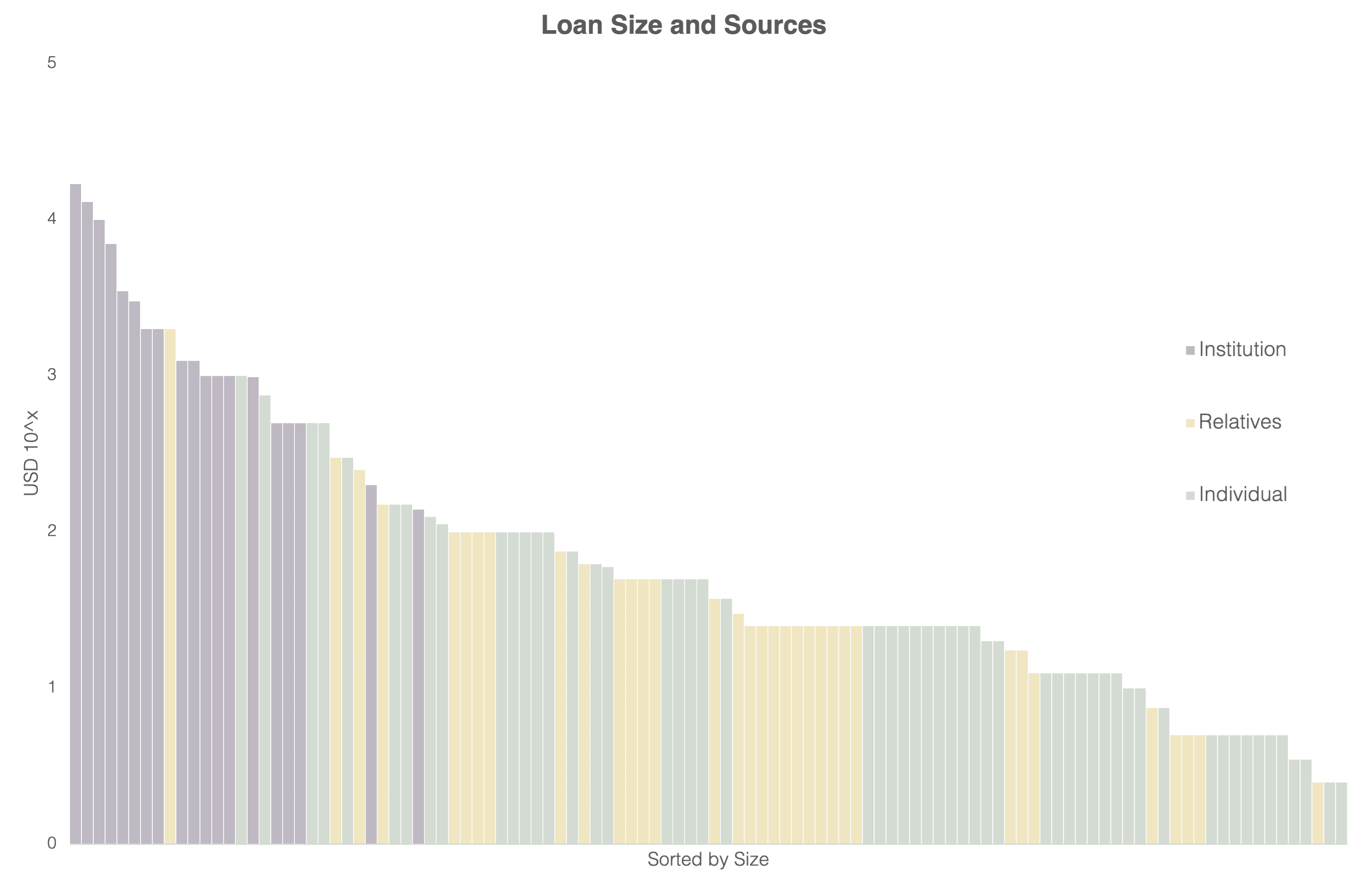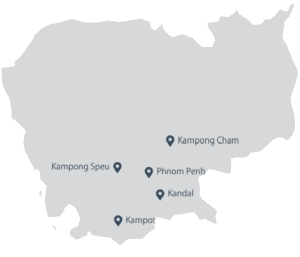“Ma… Daima…”, that’s how the villagers and children affectionately call her. At 80 years old, Rasiya (name changed for privacy) is one of Hrishipara’s respected elders, a birth assistant whose life reflects dedication, skill, and resilience.
The Gojo Impact Team visited Hrishipara village in Bangladesh to meet participants of the Hrishipara Daily Diaries project, led by Director Stuart Rutherford and Manager Kalim Ullah. The team conducted in-depth interviews to better understand household livelihoods and financial practices among long-term diarists.
Rasiya has been part of the diaries project since 2017. A divorced grandmother, she has raised five sons and continues to care for and support her family even today. For nearly three decades, she has worked as a midwife, providing vital assistance to women during childbirth in and around Hrishipara.
Skill to livelihood
Her journey as a trained birth assistant began in 2002, when UNICEF and BRAC launched joint community health and social programmes in the Gazipur District. As part of their neonatal and childbirth initiatives, a few women from the area were selected and trained by medical professionals at a local clinic, and Rasiya (by then already more than 50 years old and long experienced in traditional midwifery) was among them.
Since then, she has worked with the same clinic for over 23 years, providing care for expectant mothers. She can interpret sonographic images, identify fetal positions, and assess whether a normal delivery is possible or whether the patient should be referred to a city hospital. Rasiya remains on call 24/7, assisting with births at any hour. Her income comes primarily from clinic payments, supplemented by small tips from grateful families after successful deliveries.
Modest Earnings
Rasiya’s household income ranges between BDT 60,000 and 97,000 (approximately USD 490–974) annually, reflecting both seasonal and livelihood fluctuations. While her work as a birth assistant accounts for the core of her earnings, she also owns livestock, has farm sales, and sells milk to supplement her income. In emergencies, she sells livestock to raise quick cash, using these proceeds as a liquidity buffer. She is particularly fond of raising goats.
Additionally, she receives a government old-age pension, which provides a small but steady financial safety net. Her income is supplemented by occasional cash gifts sent during EID festivals by her sons, who reside in Singapore and Qatar. These funds are transferred through bKash (a leading Mobile Financial Service provider in Bangladesh, launched in 2011, which has become the largest mobile wallet system in the country, offering services to a large segment of rural households), and collected from local mobile agents. On average, her monthly income stands around BDT 6,000 (approximately USD 49), a modest but diversified livelihood typical of older women in rural Bangladesh.
Figure 1 below depicts a sample of Rasiya’s monthly inflows over a 5-year research period.

Managing Expenditures
Rasiya manages her finances carefully, using core earnings to cover essential expenses such as food, utilities, healthcare, and household needs. Although she generally spends within her means, financial diaries data reveal annual deficits in 2022 and 2024, as shown in Figure 2.
These deficits resulted mainly from howlats (interest-free loans) Rasiya gave to family members. In 2022, she extended howlats totaling BDT 76,000, and in 2024, another BDT 35,000, primarily to her sons and grandsons to support their overseas migration. To fulfill their travel, Rasiya sold livestock and used her savings to meet family expectations.
Rasiya’s decisions reflect the strong culture of familial responsibility in rural Bangladesh, where older adults support younger relatives’ aspirations despite personal financial strain. They also show that livelihood security for women like Rasiya is closely tied to family dynamics and the willingness to support family well-being.
Figure 2 compares her overall income and expenditure over the five-year period from 2021 to 2025.

Conclusion
Rasiya’s story captures the economic reality of a few elderly rural women: modest incomes sustained by skill, reputation, and social trust built over years. Targeted social programmes can make a difference, and the training she received through the UNICEF–BRAC initiatives continues to benefit her and her community today.
Her income, while steady, remains vulnerable to shocks. Yet her resourcefulness and energy is remarkable. By maintaining multiple income sources, such as birth assistance, livestock rearing, and a government pension, she manages to live independently while continuing to support pregnant women in her community.
Rasiya’s experience highlights the importance of ongoing mentoring and institutional support for community health workers like her. For microfinance institutions, there is an opportunity to complement training programmes with micro-savings and health financing tools to help workers manage emergencies without liquidating assets. Medical institutions, in turn, should consider expanding stipends or incentives for health workers to formalise and stabilise their roles.
Together, government agencies, NGOs, and microfinance institutions can build a holistic ecosystem where financial inclusion and social empowerment go hand in hand, ensuring that stories like Rasiya’s are not rare exceptions.
